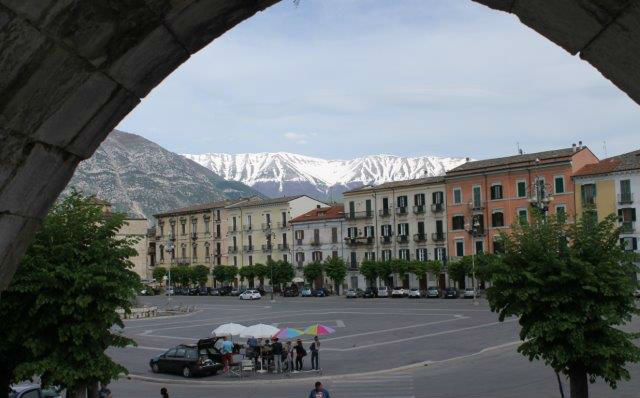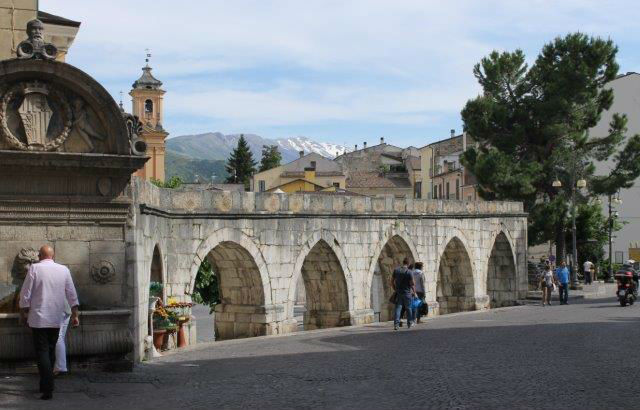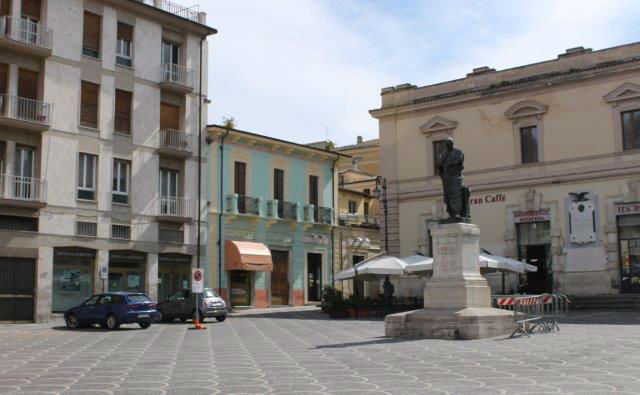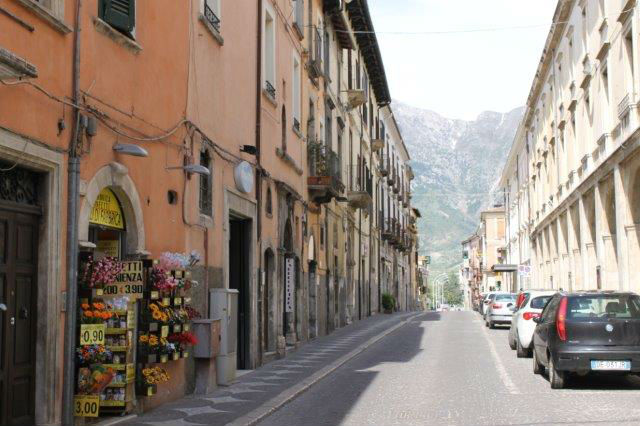 LARGELY overlooked by the holiday brochures and travel writers, Abruzzo is arguably one of the least known regions of Italy – and that’s a crying shame.
LARGELY overlooked by the holiday brochures and travel writers, Abruzzo is arguably one of the least known regions of Italy – and that’s a crying shame.
This sizeable territory, midway down the ‘calf’ of Italy’s shapely leg, has much to offer visitors and could certainly use a healthy injection of tourist currency.
Abruzzo borders Le Marche to the north, Lazio and the Gran Sasso mountains to the west and south-west, Molise to the south-east and the glorious beaches of the Adriatic coast to the east.
It proudly claims to be Europe’s greenest region with a third of its area officially protected in no fewer than three national parks, one regional park and 38 nature reserves.
 The rugged, dramatic terrain ensures the survival of three-quarters of all the continent’s living species, including the golden eagle, the Apennine wolf and the Marsican brown bear.
The rugged, dramatic terrain ensures the survival of three-quarters of all the continent’s living species, including the golden eagle, the Apennine wolf and the Marsican brown bear.
The writer Primo Levi is said to have described Abruzzo as ‘forte e gentile’ – strong and gentle – combining the beauty of the region and the character of its inhabitants. The quote has subsequently been adopted as the region’s motto.
Abruzzo’s distinctive personality and image are fashioned more by the power and impact of its natural setting than its population centres, which may partly account for its low profile on the tourist map.
Its principal city, L’Aquila, still lies hideously wounded by the devastating earthquake of 2009, while its largest centre, Pescara, has its toes in the Adriatic and can boast an international airport but is no place of great beauty.
A visit to the small, compact city of Sulmona, however, is time well spent. It sits in a natural bowl surrounded by soaring hills and mountains, and has enough in the way of history and present-day amenities to make a fascinating destination for visitors.
 Sulmona (population 25,000) was the birthplace of the Roman poet Ovid, immortalised in a bronze statue in the main piazza, and, like so much of Italy, it can trace its roots deep into the past.
Sulmona (population 25,000) was the birthplace of the Roman poet Ovid, immortalised in a bronze statue in the main piazza, and, like so much of Italy, it can trace its roots deep into the past.
The territory was ravaged by Hannibal in 211BC but he left the city itself unscathed. An early bishop was Saint Pamphilus, who died in 706; as Sulmona’s patron saint, he is buried in the city’s cathedral.
In the middle ages an aqueduct was built in the town and Sulmona became the capital of a large province. It continued to expand and a new line of walls was added in the 14th century. Two centuries later a flourishing paper industry began.
But where Hannibal had demurred, nature did not, and in 1706 Sulmona was ravaged by a major earthquake that destroyed most of the medieval city. However, it spared a number of outstanding buildings, including the aqueduct and the Gothic portal on Corso Ovidio. Much of the city was rebuilt in the elegant Baroque style of the times.
Sulmona underwent an economic boom in the late 19th century due to its railway hub and strategic location between Rome and the coast. However, those assets also made it a target for air raids during World War Two.
Campo 78 at Sulmona served as a PoW camp in both world wars. During the first it housed Austrian prisoners and in the second it held 3,000 British and Commonwealth troops captured in North Africa.
Sulmona cathedral was built on the site of a Roman temple. The city’s main thoroughfare, Corso Ovidio, connects it with the major piazzas and is lined by elegant arcades, shops, cafés, palazzi and churches.
The imposing Piazza Garibaldi is the largest square with a splendid Baroque era fountain. The vast piazza is the setting for all manner of traditional events, including an annual week-long jousting festival, and hosts a twice-weekly market that draws crowds from miles around.
 Sulmona is also known world-wide as the home of the Italian confectionery known as confetti, sugar-coated almonds traditionally given to friends and relatives at weddings and other special occasions. The local artisans also colour them and craft them into flowers and other shapes. There are two main factories in town and many shops that sell them.
Sulmona is also known world-wide as the home of the Italian confectionery known as confetti, sugar-coated almonds traditionally given to friends and relatives at weddings and other special occasions. The local artisans also colour them and craft them into flowers and other shapes. There are two main factories in town and many shops that sell them.
It’s a city with a tranquil atmosphere – other than on market days! – as well as a spectacular natural setting and an indefinable charm. Like so much of Abruzzo, it deserves a bigger share of the tourism spotlight and much wider recognition.
Pictured are the aqueduct, main piazza, small piazza and a street scene in Sulmona.
David Eidlestein